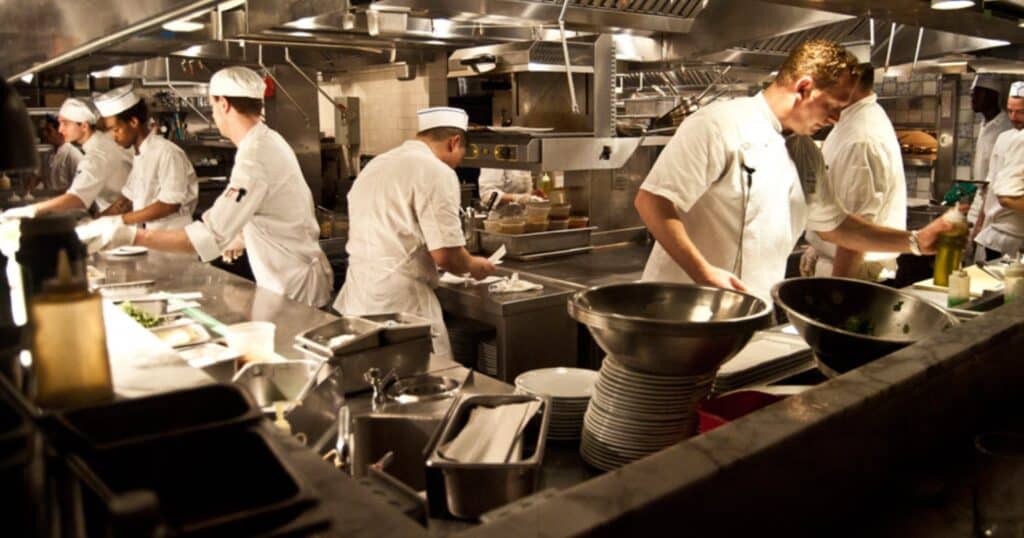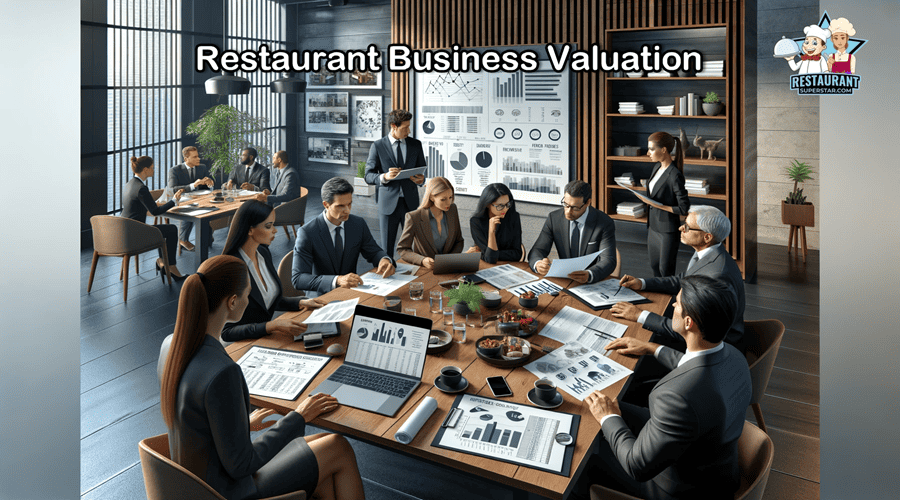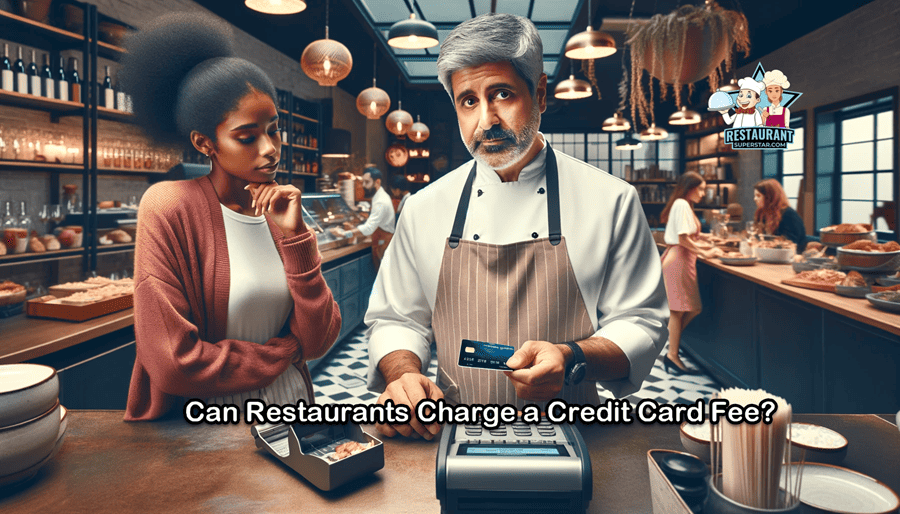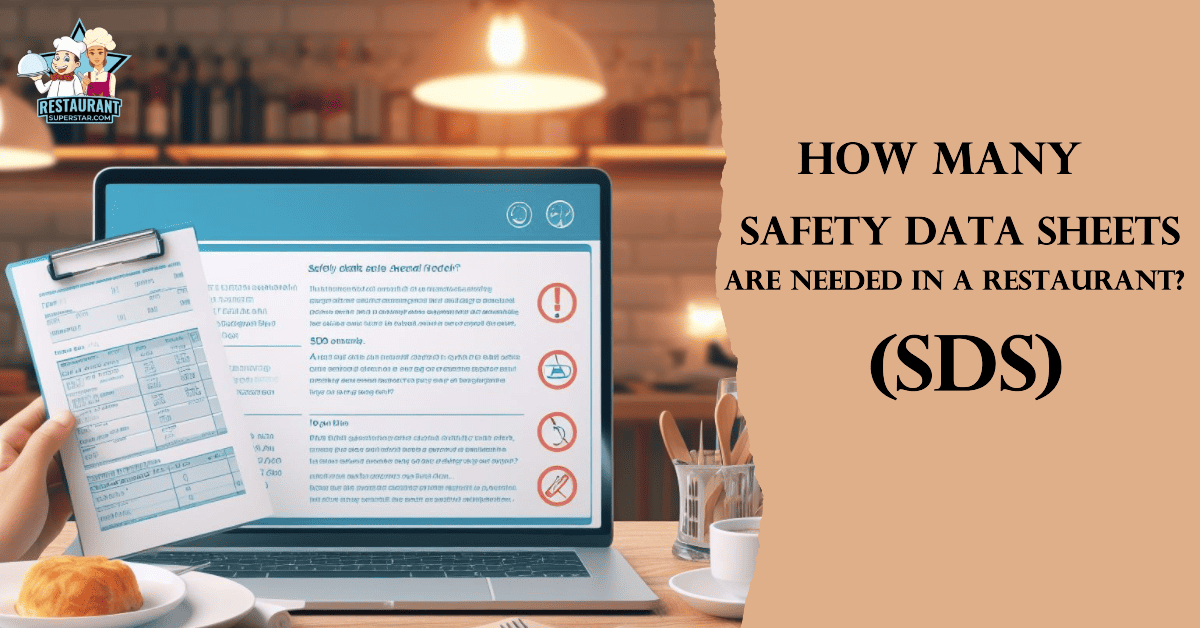How To Manage a Restaurant Kitchen – 17+ Easy Tips

Hello and thanks for stopping by! If you’re looking for information on How to Manage a Restaurant Kitchen you’re in the right place. In this article we will go into great detail on all the aspects of a restaurant kitchen and how to manage them effectively. If you find it helpful please check out some of our other articles. and don’t forget to share it with friends.
Make sure to mitigate spoilage and manage your excess inventory. Be creative. When the going gets tough, (and it will) remember to keep your calm. Make sure to keep the kitchen tidy and hygenic. This will pay off when the county inspectors pay a visit. Standardize portion sizes, and have fun!
Every aspect and activity in the kitchen of your restaurant matters. The quality of the dining customer experience frequently depends on how quickly your personnel can fulfill requests from the kitchen. Managers know the need for a functional kitchen, but organizing one for daily usage can be stressful.
Kitchens that are shoddily managed can cause employee mishaps, such as collisions and plate drops. Food preparation takes more time in a disorderly kitchen and frequently results in incorrect meals or unnecessary mistakes.
How To Manage a Restaurant Kitchen
Some Ways in Which One Can Supervise a Restaurant Kitchen
- Never undervalue human potential and interactions
Businesses today are always seeking new ways to employ technology to boost profitability and efficiency, and the restaurant industry is no different. Technology may be a restaurant manager or owner’s friend, whether it’s cutting-edge cooking equipment or a cutting-edge point-of-sale system. But keep in mind that sometimes simple human skills and communication are superior.
- Investing in your employees
Of course, having a highly skilled and motivated crew is the most significant aspect of a successful kitchen. And to achieve that, you must be prepared to spend time and money recruiting and educating the most incredible culinary staff. They will be as hardworking as needed and devoted if you demonstrate to your workers that you want to assist them in being the greatest at what they do. Additionally, you want your workers to be enthusiastic about and committed to the objective of your restaurant.
Management of a Restaurant Kitchen
The success of your restaurant is greatly influenced by how well the kitchen is run. Similar to an efficient machine. If kitchen management is done methodically, everyone working in your restaurant will find it pleasurable and straightforward. The diners standing in line on the opposite side of the restaurant are always hoping to be amazed.
Every commercial kitchen needs to strive to accomplish that. Customer satisfaction should come first, and a positive one is mainly determined by the food that leaves a restaurant kitchen. Your restaurant will expand significantly if you use the newest trends and effective cooking technology.
Mitigate Spoilage
Keep all foods and drinks at the appropriate temperature. Foods should be maintained at temperatures below 40 degrees Fahrenheit for cold foods and over 140 degrees for hot foods. Observe your stock levels and check that nothing has gone wrong. To ensure a regular stock turnover, follow the first-in-first-out rule.
Excess Inventory
In US restaurants, around 22 and 33 billion pounds of food are wasted yearly. Unbelievable food waste costs the restaurant industry $162 billion a year. This is primarily caused by overspending, overproduction, and spoiling, which may be significantly decreased with the implementation of more intelligent systems.
Food waste reduction should be a proactive goal for all restaurants. It will help you save money, boost revenue, demonstrate your dedication to sustainability, and benefit the environment.
Poor Portion Management
To guarantee that guests receive the portions they’ve grown to expect, restaurant owners must standardize and oversee the portion sizes leaving their kitchens. Therefore, portions shouldn’t be overly ample or little.Each item on your menu should be offered in a fair portion size in order to keep expenses down and keep customers happy. To begin, make sure your staff knows how to properly use serving utensils and plates on a daily basis.
Avoid Food Waste
In the United States, the problem of restaurant food waste is getting more and more prevalent 133 billion pounds of food from restaurants, grocery shops, and households were estimated to be wasted in 2010 by the USDA. Additionally, the USDA found that between 30 and 40% of the food produced in the US was lost or wasted.
Your restaurant will stay organized and save money if you keep a list of all the ingredients you have on hand. Establish a weekly time slot for inventory checks.
Be Careful of Over-ordering
There are several causes for over-ordering from suppliers and vendors. The most frequent one is an ineffective inventory system, which can lead chefs to order more food than they need. Ordering food you don’t need won’t happen if your inventory is regularly tracked and organized.
How to Handle a Kitchen Competently
Unfortunately, many talents needed to manage a kitchen don’t frequently coexist. Handling a kitchen competently involves:
- Keeping the kitchen tidy.
- Controlling food inventory.
- Supervising food preparation.
- Developing menus.
- Managing kitchen workers.
- Checking food quality.
- Ensuring all food items are stored appropriately.
Be an Efficient and Cooperative Administrator
The most critical and challenging trait to acquire is this one. Because they cook, they are called cooks, and most chefs entered the cooking industry. Great kitchen managers know that their responsibilities include hiring, firing, scheduling, purchasing, inventory, and other menial jobs that come with running a business.
Be a Diligent Worker
The above one ought to be obvious, and I believe it is in some ways. When hired as a kitchen manager, a culinary expert should know the type of hours needed for the position. Be wary of managers, especially new ones, who try to create a plan for the first time and hire many people so they can take more time off. If you must, remind them that managing entails more duties than rewards.
Be Innovative
When someone possesses the above attribute, it can be challenging to spot this quality. However, a creative personality can inspire unconventional thinking, resulting in menu items that impress your consumers and encourage them to return.
Be an Excellent Teacher
On the line, cooks tend to their stations. They prepare the food they are in charge of cooking themselves. The line is the kitchen manager’s station, and everything that comes from the kitchen is ultimately under their control. They must rely on their team to produce everything they are accountable for. That team must be able to produce their tasks with the same consistency and quality as your kitchen manager. They require instruction to do it.
Keep Cool amid Stress
Suppose you’ve ever been around a raving manager in a hurry. In that case, you might be thinking about how essential this quality truly is or how probable it is that any of them will possess it. Losing it is not the same as screaming; screaming is better avoided, but losing control is not an option.
Be a Meticulous Perfectionist
Nobody is flawless, and mistakes do happen. Good chefs still give it; they’re all. The best people put their personal touch on all that comes from their kitchen.
Be an Expert in Your Culinary Style
Sometimes even industry experts cannot distinguish between various culinary operations and the unique talents that each one calls for from the personnel that work there. Cooks specializing in banquet, high-volume, or fine cuisine acquire specialized skill sets. It’s not always easy to transfer those skill sets to different styles. Take care not to fall in love with applicants from places with a lot of attention.
What Does an Efficient Kitchen Look like?
Cooking equipment, a workstation for making meals, and enough storage space are all valuable features of efficient kitchens. An efficient kitchen may or may not have a sink.
What Increases the Kitchen’s Efficiency?
Compact or countertop appliances, ventless ovens, and other such items can help your kitchen become more flexible in the future. Investing in kitchen equipment with speedy cooking capabilities, simple automation, and cutting-edge heating technology will boost efficiency.
How to Take Stock in a Restaurant
Use a POS System and do manual inventory. A POS system has numerous benefits, including automated inventory tracking based on client orders, integrated accounting, order planning reports, and data forecasting. It does not, however, take into account other reasons for inventory loss, such as theft, dealing with customer complaints, spills, food going bad, or not preparing food or drinks properly. A POS system cannot account for the conditions mentioned above unless the data is manually entered. Therefore, conducting an inventory by hand guarantees a more thorough, accurate report.
Establish an Inventory Team and a Time-table
Restaurants can serve all guests and still have sufficient food and ingredients on hand thanks to inventory management, which helps them prevent loss and spoilage. Restaurants that manage their inventories well are more likely to have long-term success.
You must manage your inventory properly to collaborate with vendors, lower the overall cost of goods, enhance profitability, and keep customers satisfied.
USING A RESTAURANT MANAGEMENT SYSTEM,
Automate Your Inventory Tracking
Restaurants may manage ingredient stock levels, purchase orders, recipes, and menu costs with restaurant inventory management software. The top point-of-sale (POS) systems integrate with or sync with restaurant inventory management software, saving hours of administrative work. The monthly fee for these tools ranges from $99 to $129 per tool. However, a few programs with fewer capabilities are free to use.
Keep Additional Materials on Hand
The manager will be able to schedule food orders, compute food expenses since the last inventory, and make menu item changes as necessary, provided they are aware of the supplies available at any given time. Inventory monitoring makes it easy to identify potential waste and theft issues.
Monitor Your Sales Every Day
Run a report utilizing your point-of-sale software for a certain period to include takeout sales, internet orders, and bar sales all in one. Take the total amount billed for all checks written within the period. The total sales will be that.
Sort and Tidy Your Inventory Shelve
Label all of your supplies and ingredients in the storage area. Treat your storage area like a grocery shop when arranging your ingredients. Establish a standardized labeling system for your inventory so your staff members can quickly locate what they need. Put all your labels above or below each product on the shelf to prevent misunderstanding. These labels not only make it easier for your employees to find things, but they also serve as a reminder of what your kitchen requires when you need to reorder supplies.
How to Enhance Kitchen Inventory Accuracy in a Restaurant
Management of the restaurant company includes managing the inventory of the establishment. Menu planning, interior design, and employing skilled cooks, servers, and bartenders are a few aspects of running a restaurant. Due to increasing competition, restaurant operators must find new customers, cultivate repeat business, and expand their clientele.
The process of keeping track of the goods and supplies coming into your restaurant and the resources needed to serve them to your guests is known as restaurant inventory management. Additionally, it must take waste and overages into consideration. Finally, the human component of the inventory process must be considered.
Meal Control Techniques
Quality control is necessary for all food products to be safe and healthy for customers. Given that these products directly impact customers’ health, it is essential that the product’s quality status be meticulously documented and checked throughout the whole production process.
Ingredient Specifics
The necessary action an ingredient end user can do to safeguard product safety, quality, and compatibility is to create an accurate and thorough set of ingredient specifications. The ingredient specification is a definitive statement of guidelines, restrictions, specifications, regulatory references, certificates, and other criteria or instructions about end-user expectations and specifics.
Accepted Vendor List
Asking other restaurants whose produce vendors they use is the best method to find one in your region. The USDA’s Local Food Directory is another option. Make that your regulatory agency has approved the supplier at all times. There are many commercial sellers.
Formulation and Recipes for Meals
One crucial idea must guide menu planning at all times: menus are created with the consumers of the food in mind. Popupreneurs frequently make the mistake of creating menus that appeal to them rather than keeping in mind that the popup restaurant is what ultimately determines whether a menu is successful or not. Popup entrepreneurs can successfully design and implement menu ideas by keeping up with culinary trends related to ethnic preferences, tastes, healthy eating, and wellness.
Product Quality Norms
When diners enter a restaurant and know what to expect, they are much happier. You must have established expectations for customer service and consistency in the food’s quality, amount, and flavor. You might maintain consistency in service by following set procedures, which would help you win your customers’ loyalty.
Production Method
Industrial procedures transforming fresh produce into consumable food products are food manufacturing. It entails several procedures, including sourcing, preparing, producing, packaging, and distributing food. Many components used in the production of food are also used in the production of apparel and automobiles.
However, food manufacturers pay special attention to factors like shelf life, flavor, and food safety. Access to foods and goods grown far from us during the off-season is made possible by food production. We can include processed foods throughout our diets to maintain good health.
Packing and Branding
Food labels are required by law and essential for many reasons. They assist consumers in choosing food wisely, storing and using it safely, and enabling individuals to schedule when they will eat it, all of which reduce food waste.
Effective Manufacturing Procedures and Hygiene
Hand cleaning is the most effective technique to stop the transmission of illnesses. Use soap and water to wash your hands often, and if you can’t, use a hand sanitizer with alcohol (containing at least 60 percent alcohol). Whenever one is accessible, it’s crucial to have a vaccine against any illnesses or viruses that contain one.
As the Kitchen Manager, What Is Your Primary Responsibility?
Generally speaking, kitchen managers are in charge of keeping the kitchen tidy, controlling food inventory, supervising food preparation, developing menus, managing kitchen workers, checking food quality, and ensuring all food goods are kept appropriately.
FAQS
How Is a Restaurant Kitchen Organized?
- Setting a realistic time Frame is the first step.
- The second step is to remove clutter from your home.
- The third step is to clear the area completely.
- Divide and conquer task is the fourth step.
- Organizing by zones is the fifth step.
- Creating practical, clutter-free kitchen counter space is the sixth step
- The seventh step is to maintain control over the papers.
How Do You Effectively Manage a Restaurant’s Kitchen?
- You should rethink the design of your kitchen.
- You want to create efficient workstations
- Establishing an effective inventory system;
- Preparing in advance.
- Observing how employees are responding.
What Constitutes a Successful Restaurant Kitchen?
Embracing the opinions of your team
It is essential to hear your team out and value their opinions. Consider your crew as the body of the kitchen; they can identify areas for improvement that you might have missed.
Listen to your team, and then set procedures in place so that everyone is working together and doing so automatically so that you aren’t required to monitor the whole process.
Being organized and efficient.
You must organize and streamline every procedure in your kitchen. Every food on your menu should be easy to create and serve, and your kitchen should make this possible.
Start by thinking about getting rid of meals that take too long to prepare, or maybe keep them but serve them as specials only at off-peak times. In reality, an overly vast menu is a common problem that many chefs encounter.
Make your menu manageable, and teach your employees how to operate. Make sure you have the appropriate tools on hand to meet all of your demands.
Smart use of technology
The efficiency and precision of service in restaurants can be significantly increased by technology. With current point-of-sale (PoS) systems, house personnel may maintain close contact with the kitchen and pass messages, orders, and cancellations.
It is nevertheless preferable for a house staff member to enter the kitchen and alert the chef if the message is urgent. We must continue to treat customers and team members with a human touch in a service-oriented industry.
What Obligations Does a Kitchen Manager Have?
The obligations of a kitchen manager involve the following. They –
- Control the kitchen crew and plan the orders for the food
- Control the cooking and preparation of food
- Verify the temperature and food plating.
- Specify serving sizes.
- Plan the shifts of the kitchen crew
- The menu items’ prices are determined by the restaurant manager.
- Purchase food items and kitchenware as necessary.
- Teach kitchen employees how to prepare meals and plate them properly
- Keep food items by safety procedures (e.g., in refrigerators)
- Keep expense records every week and month.
- Maintain the kitchen’s cleanliness and safety requirements.
How Do Chefs Organize Their Kitchens?
- Incorporating your storage requirements and preferences throughout the preliminary planning stages is one trick to constructing a fantastic kitchen. A storage strategy will consider how frequently you cook, host events, and entertain. The best functionality that suits your demands and lifestyle must be included in a fantastic kitchen in addition to its breathtaking appearance.
- A well-kept counter is a priceless asset in any kitchen. To keep worktops clean, it is advised to store frequently used kitchen tools like tongs, wooden spoons, and spatulas in circular containers. Next to the cooktop, It keeps butter, salt, pepper, and olive oil.
- Using separate trays and baskets in the fridge and pantry, items such as packets of chips, pretzels, and other snacks; oils and vinegar; vitamins, and medication, may be neatly organized.
How To Organize Kitchen Staff?
Be innovative.
When someone possesses the attribute mentioned earlier, it can be challenging to spot this quality in them. However, a creative personality can inspire unique thinking that results in menu items that impress your consumers and encourage them to return.
Under duress, remain composed.
Suppose you’ve ever been around a raving manager in a hurry. In that case, you might be thinking about how significant this quality truly is or how probable any of them will possess it. Losing it is not the same as screaming; screaming is better avoided, but losing control is not a choice.
Be knowledgeable about the food you serve.
When it comes to distinguishing between different restaurants and the distinct abilities required by their employees, even the most seasoned chefs have a hard time. Cooks specializing in banquet, high-volume, or fine cuisine acquire specialized skill sets. It’s not always easy to transfer those skill sets to different styles. Take caution not to fall in love with applicants from places with many stars.
How Does One Stock a Commercial Kitchen?
Know the choice of your family
For various households, a “well-stocked pantry” indicates different things. If your family enjoys Italian cuisine and creating homemade sauces, you should always have tomato paste on hand. Baking enthusiasts will require plenty of sugar, butter, flour, and leaveners. Think about the meals that your family loves the best. Which recipes do you frequently make? Buy two of those ingredients the next time you run to the supermarket.
Take into account ingredient storage and shelf life.
You won’t find advice in this piece to buy identical glass jars and a brand-new label maker so you can flaunt your shelves on Instagram. However, planning your storage will help you retain a stable inventory and avoid pawing through a spice closet with sticky hands from kneading pizza dough.
Why Is Kitchen Organization Important?
- Enhanced productivity
- You get to invite visitors over freely.
- You’ll linger in there more comfortably.
- Fewer cleanup activities
- Food freshness over a more extended period
What Abilities Are Necessary to Be a Kitchen Manager?
Below are abilities that are necessary to be a kitchen manager
- Managing personnel and creating a budget for expenditures.
- Delivering directions to personnel simply and efficiently.
- Fostering friendly and cooperative working relationships with the culinary crew.
- Creating and cooking fresh, fascinating, and inventive meals.
- Being able to make dishes that clients would appreciate by having a good sense of taste and scent.
- Ability to safely chop, dice, and cut food with knives and other kitchen tools.
- The ability to supervise the meal preparation and serving for extended periods.
- Good time management skills guarantee that meals are prepared and served efficiently.
Conclusion
The success of your restaurant is greatly influenced by how well the kitchen is run. Similar to an efficient machine. If kitchen management is done methodically, everyone working in your restaurant will find it pleasurable and straightforward. The diners standing in line on the opposite side of the restaurant are always hoping to be amazed. Every commercial kitchen needs to strive to accomplish that. Customer satisfaction should come first, and a positive one is mainly determined by the food that leaves a restaurant kitchen. Your restaurant will expand significantly if you use the newest trends and effective cooking technology.
Jeff Smith is a Restaurant Consultant with over 20 years of hospitality experience ranging from server to owner and general manager. He focuses on Restaurant POS technology as well as restaurant marketing. Make sure to check out our world famous restaurant resources page for a comprehensive offering of hand picked resources and tools to help your business. You can also check out some of our other restaurant business articles.





